I spent yesterday trapped in a gridlock of uncomfortably warm bodies amongst the Pre-Raphaelite Brotherhood.
Yes, it was as fantastic as it sounds.
This post isn’t going to be remotely succinct or clever. I just want to gush. I loved it. So many of my favourite things in one place. And having the opportunity to sit and chat with fellow PRB-lovers afterwards was just terrific.
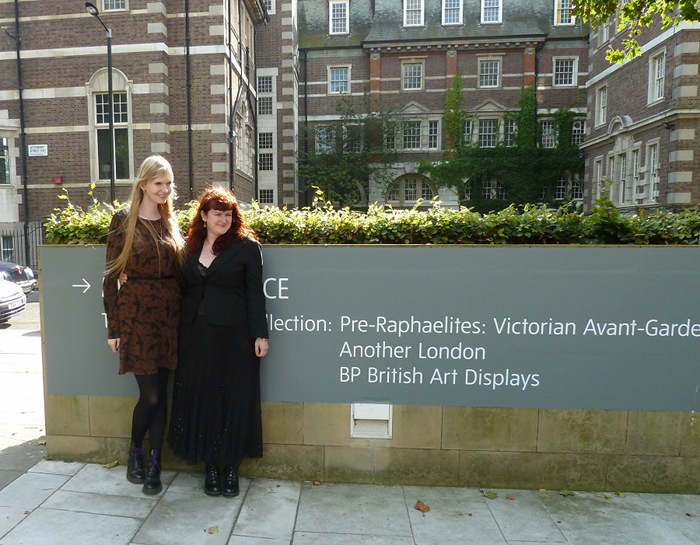
Kirsty Stonell Walker of ‘The Kissed Mouth’ and I, modelling Doc Martens, the unofficial footwear of PRB-admirers everywhere.
A lot has been said in the press recently, some more sensible than the rest. There’s been the obligatory game of Hunt The Phallus, and general moaning about how the PRB would have been so much better if they’d just dropped a shark into a tank of formaldehyde. But were the PRB truly Avant-Garde?
I come at the PRB from a literature point of view. My MA focused on Rossetti’s cycles of desire and denial in The House of Life. So although I know a fair bit about the PRB’s visual art, the wider subject of Avant-Garde isn’t something I feel I can comment on.
However, I can give my top five moments:
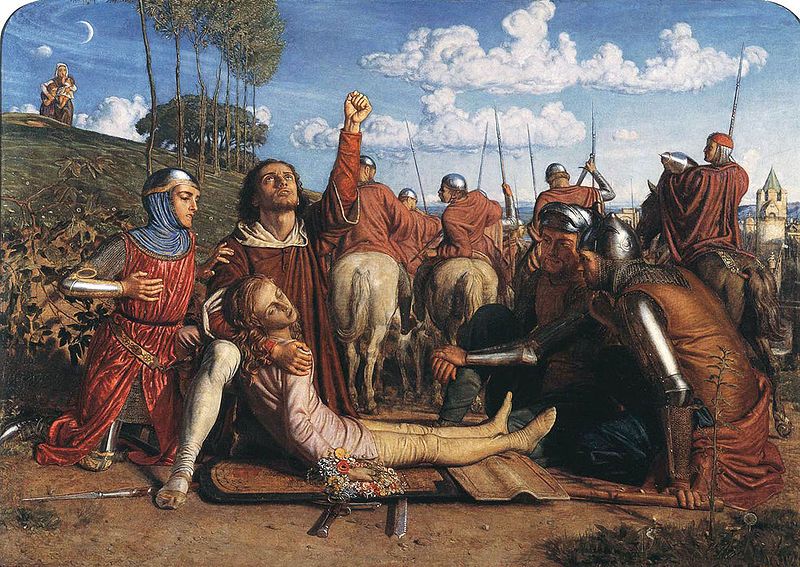
5. I saw Rienzi. It was blue. So blue. Hunt’s colours are so psychedelic and trippy – mountains are purple, flesh is orange, goats are bizarre and terrifying. His work has to be seen to be fully experienced.
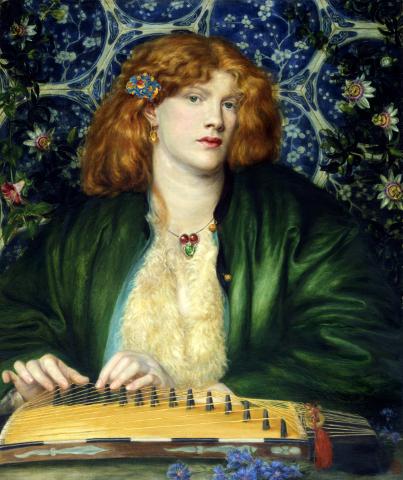 4. The passion flowers in Rossetti’s The Blue Bower were like glossy photographs. As Edward Burne-Jones said, Rossetti somehow makes everything look as if it’s under glass, though he swore he didn’t use glaze.
4. The passion flowers in Rossetti’s The Blue Bower were like glossy photographs. As Edward Burne-Jones said, Rossetti somehow makes everything look as if it’s under glass, though he swore he didn’t use glaze.
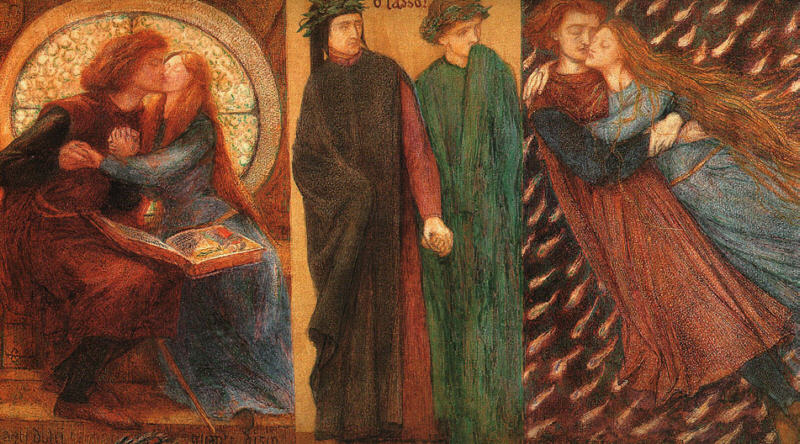 3. Rossetti’s Paulo and Francesca da Rimini. Strangely washed-out and chalky compared to the print on my wall. Francesca’s incredibly long hair has the texture of real long, fine hair in contrast to the lustrous thickness of the hair in his later work.
3. Rossetti’s Paulo and Francesca da Rimini. Strangely washed-out and chalky compared to the print on my wall. Francesca’s incredibly long hair has the texture of real long, fine hair in contrast to the lustrous thickness of the hair in his later work.
2. Speaking of lustrous hair, Rossetti’s teenage self-portrait was hung in the first room to lure in all the ladies.
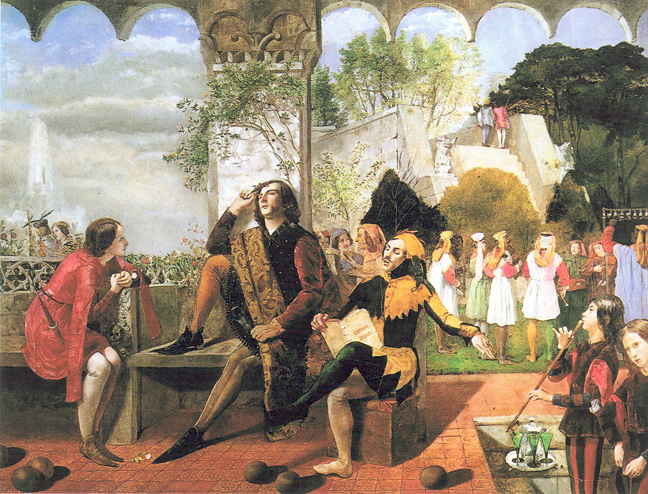 1. Walter Howell Deverell’s Twelfth Night. I hadn’t allowed myself to read spoilers about the exhibition, so turning a corner and seeing this was a huge surprise. I was so happy for him.
1. Walter Howell Deverell’s Twelfth Night. I hadn’t allowed myself to read spoilers about the exhibition, so turning a corner and seeing this was a huge surprise. I was so happy for him.
You see, poor Deverell had no luck. So handsome (that’s him in the middle and Rossetti on the right) and so promising a talent, his work was badly hung at the RA, his The Banishment of Hamlet was later destroyed in a gas explosion, and he died of kidney disease and dysentery three months after his 26th birthday.
Deverell’s decline and death hit Rossetti hard. One of the last times Rossetti visited him, “[Deverell] rose up in bed as I was leaving and kissed me, and I thought then that he began to believe that his end was near”.
The whole story is so sad. It was good to see him represented.
I had a few small criticisms, but only on the understanding that the exhibition was wonderful and I’ll probably go back at least twice.
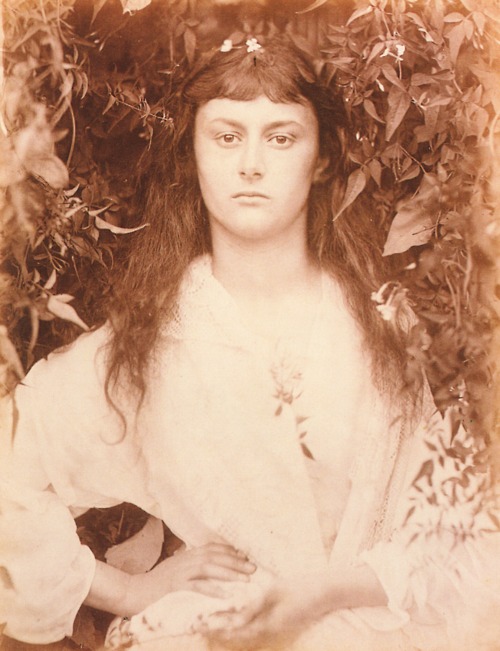 Of course, there were pieces I was dying to see that weren’t included. Julia Margaret Cameron’s Pomona, for one: Alice Liddell, all grown up and threateningly beautiful. And I’m always hoping for a second viewing of a lock of Rossetti’s hair, which I saw at the Fitzwilliam a few years ago (alongside Keats’ hair!) – a sight I never fully recovered from.
Of course, there were pieces I was dying to see that weren’t included. Julia Margaret Cameron’s Pomona, for one: Alice Liddell, all grown up and threateningly beautiful. And I’m always hoping for a second viewing of a lock of Rossetti’s hair, which I saw at the Fitzwilliam a few years ago (alongside Keats’ hair!) – a sight I never fully recovered from.
I did feel that the show could have been organised differently. It was a mammoth undertaking and difficult to tackle, but I felt that the different facets of the Pre-Raphaelite circle needed their own space. There was an element of jumbling that was interesting for people with prior understanding of the PRB, but perhaps confusing for those coming in cold.
I think the problem in creating an entire PRB exhibition is that you’re dealing with so many people who all evolved dramatically in taste and execution over a period of decades. So you’ve got Rossetti offering tiny jewel-toned watercolours in one room, and then massive red-lipped vampiric creatures in the next. You want to ask what happened.
Perhaps a clearer linear structure could have added something. For instance, ‘this is what they hated, here’s how they banded together, here’s how they evolved and the legacy they left’. I also would have loved to have seen at least part of the manifesto emblasoned somewhere, because everyone loves a good manifesto.
And then there was the gift shop. The £25 strings of plastic beads would have left William Morris reeling. Expensive satchels and striped scarves were very nice but had nothing to do with the PRB. We were hoping for a bit more effort. Having said that, my life has been enriched by the possession of a Scapegoat fridge magnet.
Overall, though, what an overwhelming experience. Next up, Edward Burne-Jones at Kelmscott!


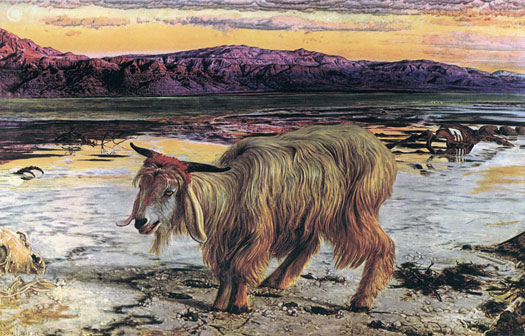
I read the Fiona McCarthy review, and I can kind of see the thematic thing, but yeah, I think the Pre-Raphs need to be displayed somewhat chronologically, as they were in the 1984 exhibit, according to her. I kick myself regularly because I had a chance to see that but it was so damned crowded I left in disgust at not being able to see the pictures for the people. I should have persisted though, I realize now. Argh!
I’m still somewhat upset with the Tate for the way that they were displaying the PRB stuff when I was there last year, all jumbled together on the wall in an attempt to give a sense of a Victorian art gallery, again really no good for those coming to the PRB for the first time. They’re just lucky that Millais’ Ophelia and DGR’s Beloved were where I could see them!!
But it sounds like they’ve somewhat redeemed themselves with this exhibit, so I’ll forgive them, a bit. 😉 Looking forward to my postcard!! 🙂
Something hilarious in the catalogue, actually – there’s a photo from the 1984 exhibit of Margaret Thatcher reaching out to a painting! Surreal. I do hope she resisted the urge to touch.
Pingback: Reviews of Pre-Raphaelites: Victorian Avant-Garde | The Pre-Raphaelite Society
Dear Verity,
Thank you very much for your effusive description of your visit to our exhibit. I do hope you will return again. Note that we would have provided a Manifesto but the PRB never composed one! The works are their statements, ultimately. I take the point about a chronological hang but, basically, the exhibition does fairly function in that way. The first room is the early stuff, the next three rooms are works grouped thematically from the first decade of the P-Rs (looking for interesting, never before elucidated, juxtapositions), then gallery 5, ‘Beauty’, springs you into a dramatic change of focus and theme and style in the 186s, and the final gallery is the late work.
Hope you enjoy the catalogue and thanks again for your keen interest!
With all best wishes,
Jason Rosenfeld
co-curator
‘Pre-Raphaelites: Victorian Avant-Garde’
Distinguished Chair and Professor of Art History
Marymount Manhattan College
Hi Jason,
Thank you for reading! I’m really pleased you did. I thoroughly enjoyed the exhibition and I’m planning to go back sometime in the next couple of months to get a second, longer look at Rienzi.
My point about the manifesto was in reference to William Michael Rossetti’s retrospective list of Pre-Raphaelite principals (‘have genuine ideas to express, study nature’, etc) because although I agree there was no formal manifesto that survives today, I think that as he was there at the time, acting as Secretary, it’s safe to take his summary as canon.
But yes, I loved it, and I’m so glad Deverell got a decent look-in. I’m off to Kelmscott next month, so after that I’m sure I’ll be back to the Tate.
Pingback: A call for establishment of The International Deverell Defence League | Verity Holloway